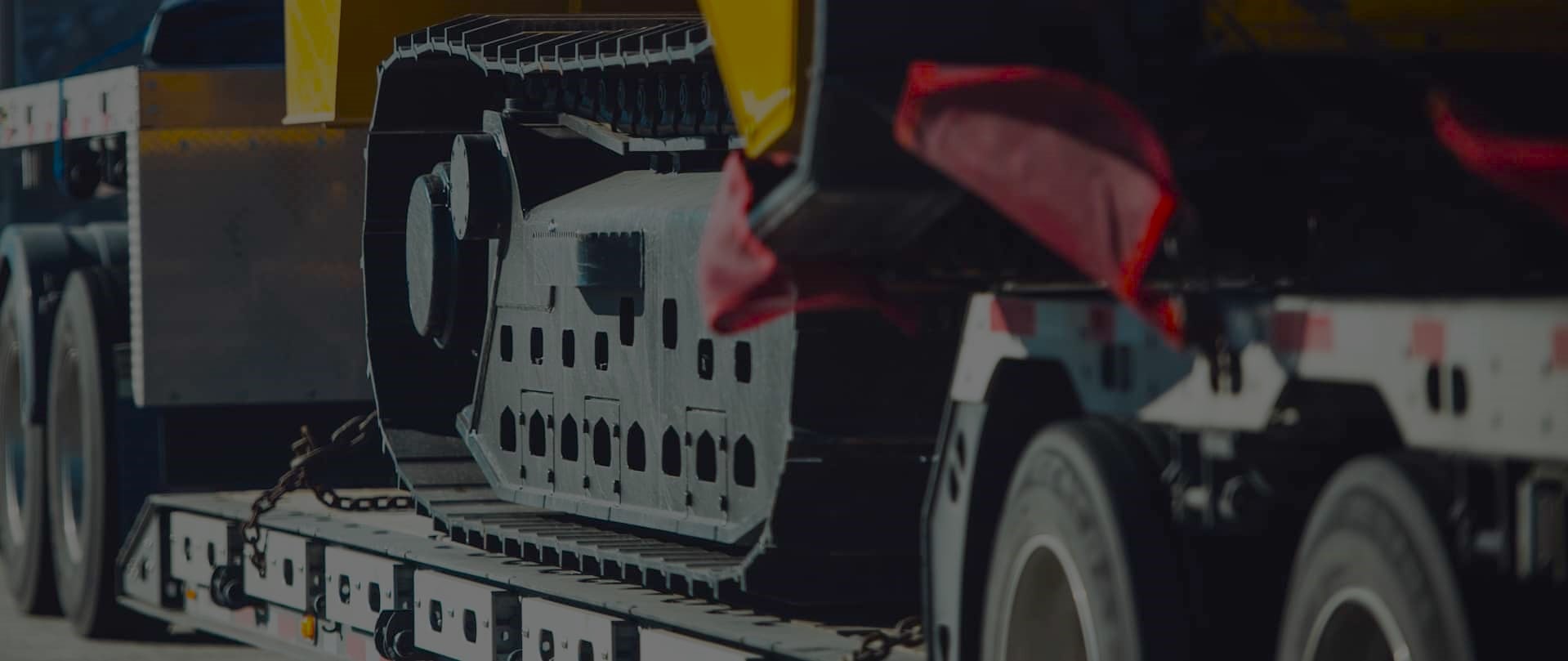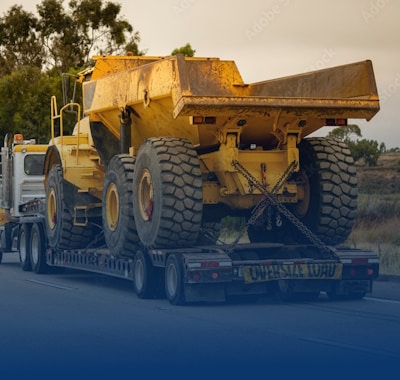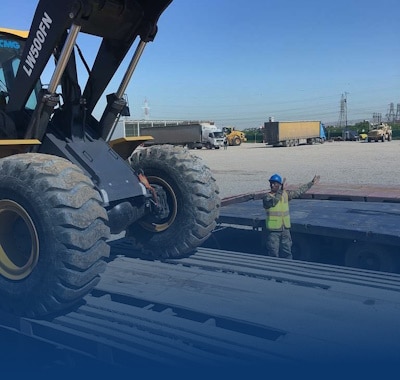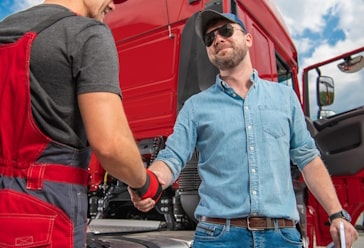How to Choose the Right Trailer for Heavy Equipment Transport
Freedom Heavy Haul can offer expedited Pickup and Delivery for any size shipment anywhere in the USA. Contact us today for No Hassle, No Pressure Pricing.
Selecting the correct trailer for heavy equipment is crucial for safety and efficiency. The right type ensures smooth loading, secure transport, and compliance with regulations. Whether you need a flatbed, gooseneck, or specialized deck, understanding your requirements is key.
Factors like size, weight, and towing capacity play a significant role. Manufacturers like BigTex, Reitnouer Aluminum Trailers, and Kaufman Trailers offer diverse options tailored to different needs. From hitch systems to tire specifications, every detail matters.
This guide covers essential aspects, including frame durability, height, and length considerations. We’ll explore how to match your vehicle with the right trailer to avoid damage and ensure smooth operations. Let’s dive into the details to make an informed decision.
Exploring Different Trailer Options for Heavy Equipment
Trailers come in various configurations, each suited for unique equipment requirements. Whether you need a flatbed, drop-deck, or specialized gooseneck, understanding the differences ensures efficient and safe transport. We’ll explore the key features of each type to help you make an informed decision.
Flatbed, Drop-Deck, and Low-Profile Solutions
Flatbed trailers are versatile and widely used for hauling heavy equipment. Their open design allows easy loading and unloading, making them ideal for machinery like tractors and skid steers. Brands like BigTex and Kaufman Trailers offer durable models with reinforced frames for added stability.
Drop-deck trailers feature a lower deck height, reducing the overall center of gravity. This design is perfect for taller equipment, ensuring compliance with height restrictions. Low-profile options, such as those from Landoll, provide additional clearance for oversized loads.
Gooseneck and Removable Gooseneck Trailer Benefits
Gooseneck trailers excel in weight distribution and maneuverability. Their design connects directly to the truck’s bed, offering better control during turns. Removable gooseneck models, like those from Kaufman Trailers, provide flexibility for different hauling needs.
These trailers are ideal for heavy-duty equipment, ensuring stability even on uneven terrain. Their robust construction minimizes the risk of damage during transport.
Specialized Trailers for Oversized and Heavy-Duty Equipment
For oversized loads, specialized trailers like lowboys and RGNs (Removable Gooseneck) are essential. These models offer extended deck lengths and multiple axles to handle extreme weights. Brands like Landoll and BigTex provide options tailored to meet specific hauling requirements.
These trailers are designed with reinforced frames and advanced hitch systems, ensuring safe transport of heavy machinery. Their versatility makes them a top choice for industries like construction and agriculture.
| Trailer Type | Key Features | Best For |
|---|---|---|
| Flatbed | Open design, easy loading, reinforced frame | Tractors, skid steers |
| Drop-Deck | Lower deck height, reduced center of gravity | Taller equipment, oversized loads |
| Gooseneck | Improved weight distribution, maneuverability | Heavy-duty equipment |
| Lowboy/RGN | Extended deck, multiple axles, reinforced frame | Oversized, extreme weight loads |
Understanding these options ensures you select the right trailer for your equipment needs. For more insights, explore our guide on choosing the right trailer or learn about common trailer types used in heavy hauling.
Understanding Load Capacity and Equipment Dimensions
Understanding load capacity is critical for safe and efficient equipment transport. Matching the right trailer to your machinery ensures smooth operations and compliance with regulations. We’ll explore key factors like weight limits, load distribution, and interior dimensions to help you make informed decisions.
Weight Capacity and Load Distribution Considerations
Every trailer has a specific weight limit, which includes the load and the trailer itself. Exceeding this limit can lead to safety hazards and legal issues. Proper load distribution is equally important. Uneven weight can cause instability during transportation, increasing the risk of accidents.
- Check the Gross Vehicle Weight Rating (GVWR) to ensure your trailer can handle the load.
- Distribute weight evenly across the deck to maintain balance.
- Use tie-downs and restraints to secure the equipment during transit.
Ensuring Adequate Trailer Dimensions for Your Equipment
Matching the interior dimensions of your trailer to the size of your equipment is essential. A flatbed or gooseneck trailer with sufficient length and width ensures easy loading and unloading. Measure your machinery accurately, including height, width, and length, to avoid complications.
- For tall equipment like tractors, consider a drop-deck or low-profile trailer.
- Ensure the deck length accommodates the entire load without overhang.
- Verify the interior height to prevent damage to your equipment.
By carefully evaluating these factors, you can select a trailer that meets your hauling needs while ensuring safety and efficiency.
How to Choose the Right Trailer for Heavy Equipment Transport
Evaluating your hauling needs is the first step toward efficient equipment transport. Understanding your current and future requirements ensures you select the right trailer for the job. Whether you’re transporting a skid steer or heavy-duty machinery, assessing these factors prevents costly mistakes.
Assessing Your Hauling Needs and Future Requirements
Start by analyzing your current equipment and potential future upgrades. Consider the weight, dimensions, and type of machinery you’ll be moving. For example, a gooseneck trailer might suit heavy-duty loads, while a flatbed offers versatility for lighter equipment.
Anticipate future needs by evaluating industry trends and your business growth. This proactive approach ensures your trailer remains a long-term investment, saving you time and resources.
Matching Towing Vehicle Capabilities with Trailer Specifications
Your vehicle’s towing capacity must align with the trailer’s specifications. Check the engine strength, braking system, and hitch compatibility. Overloading your vehicle can lead to safety hazards and damage to both the trailer and equipment.
Technical factors like frame integrity and load capacity are equally important. Ensure the deck can handle the weight and dimensions of your machinery. For oversized loads, consider specialized options like lowboys or RGNs.
- Verify the Gross Vehicle Weight Rating (GVWR) to avoid exceeding limits.
- Ensure proper weight distribution across the trailer for stability.
- Use secure tie-downs to prevent damage during transit.
By aligning your vehicle and trailer specifications, you ensure safe and efficient transport. For more insights, explore our guide on choosing a heavy-hauling trailer.
Implementing Safe Loading and Securement Practices
Safety is paramount when transporting heavy machinery. Proper loading and securement techniques ensure your equipment remains stable during transit. We’ll explore effective methods to load, unload, and secure your cargo safely.
Effective Techniques for Loading and Unloading Equipment
Loading heavy machinery onto a trailer requires precision and care. Start by using sturdy ramps designed for the weight of your load. Ensure the deck is clear of debris and obstacles before positioning the equipment.
Center the machinery on the trailer to maintain balance. Gradual loading prevents sudden shifts that could destabilize the vehicle. For larger equipment, consider using a gooseneck or flatbed trailer for better weight distribution.
Proper Use of Chains, Straps, and Bindings for Cargo Security
Securing your cargo is critical to prevent movement during transport. Use high-quality chains, straps, and bindings rated for the weight of your load. Attach them to designated binding points on the trailer frame for maximum stability.
Re-check all securements after the first few miles of travel. Vibrations can loosen straps, so periodic inspections are essential. Follow safety standards from the Federal Motor Carrier Safety Administration (FMCSA) to ensure compliance.
| Securement Method | Best Use | Key Benefits |
|---|---|---|
| Chains | Heavy-duty equipment | High strength, durability |
| Straps | Lighter machinery | Flexibility, ease of use |
| Bindings | Oversized loads | Secure multiple points |
Manufacturers like Nelson Trailers and Landoll recommend using reinforced frames and advanced hitch systems for added safety. For more details on gooseneck trailer weight limits, visit our comprehensive guide.
Essential Maintenance and Inspection Practices
Maintaining your trailer ensures safe and efficient equipment transport. Regular inspections and proper care prevent costly repairs and extend the life of your investment. We’ll guide you through essential practices to keep your trailer in top condition.
Conducting Thorough Pre-Trip Inspections
Before every haul, perform a detailed pre-trip inspection. Check the frame for cracks or rust, ensuring structural integrity. Inspect the axle and suspension system for wear and tear, as these components bear the brunt of heavy loads.
Examine the tires for proper inflation and tread depth. Uneven wear can indicate alignment issues. Don’t forget to verify that all lights and reflectors are functional for safe nighttime travel.
- Inspect the deck for damage or loose fasteners.
- Test the brakes and ensure they respond effectively.
- Verify that all cargo securement devices are in good condition.
Routine Maintenance for Frame, Axles, and Tires
Regular maintenance is key to preventing unexpected breakdowns. Lubricate moving parts like hinges and joints to reduce friction and wear. Clean the trailer regularly to remove dirt and debris that can cause corrosion.
Check the axle alignment periodically to ensure even weight distribution. Rotate the tires to promote uniform wear and extend their lifespan. For flatbed trailers, inspect the wooden or metal deck for splinters or rust.
“Consistent maintenance not only prevents damage but also ensures compliance with safety regulations.”
For more tips on trailer care, explore our comprehensive guide or learn about equipment shipping best practices.
Final Tips for Efficient and Safe Equipment Transport
Ensuring safe and efficient transport starts with the right equipment and practices. Selecting the appropriate trailer type, such as a flatbed or gooseneck, ensures your load is secure and stable. Always match your vehicle’s towing capacity with the trailer’s specifications to avoid damage or accidents.
Proper cargo securement is essential. Use high-quality chains, straps, and bindings to prevent movement during transit. Regular maintenance, including frame and tire inspections, extends the life of your trailer and ensures compliance with safety standards.
For specialized needs, consider options like RGN trailers for oversized loads. By following these best practices, you can achieve seamless hauling and protect your equipment. Explore our guide on trailer for heavy equipment shipping in for more insights.







